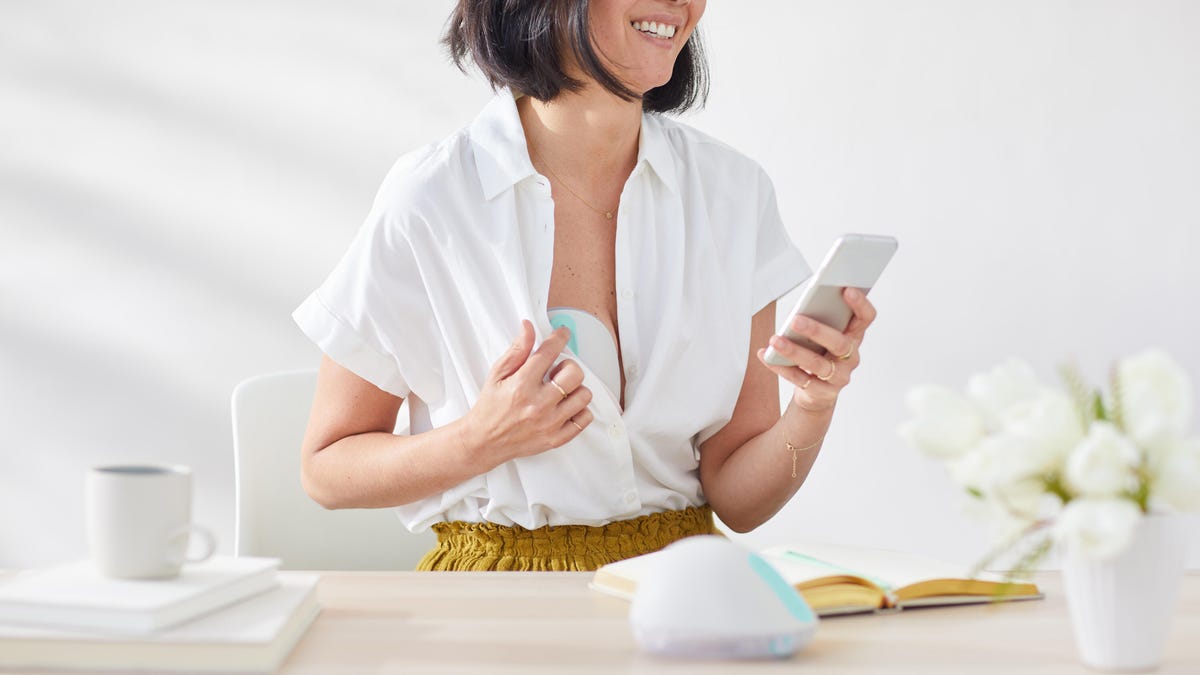 Why You Can Trust CNET
Why You Can Trust CNET Willow Pump Generation 3 now on sale, with new tech to help moms get more milk
And it feels more comfortable, too.

The third-generation Willow is now on sale, designed to help moms pump more milk in a session.
Willow changed the game for pumping moms with its quiet, in-bra, spill-proof wireless breast pump. Now a third-generation model is available to buy, promising to make the experience more comfortable and yield more milk in a pumping session.
Willow Pump Generation 3 looks identical to older models, but the tweaks are all with the tech inside. It has a slower, softer pumping rhythm, along with a system that adjusts to how it pumps to maximize milk production. It also gives moms more control with an expanded range of suction levels and a sensitivity setting.
I had a chance to test this new model a few times on my work commute, covertly pumping on packed New York subway trains. As someone who's been using last year's Willow for several months, the change in feel for the new model is subtle and yes, a bit more gentle.
It's designed so I don't have to think about or mess with any settings. Once it starts, I can move on to other tasks in my rush to get out the door. But if you did want to tinker with settings, there are more options: Moms can increase suction in the stimulation phase, something you couldn't do before.
Willow says all these changes add up to helping moms be more productive in a session. Willow had a test group of moms use both the older model and this new model, and found moms pumped 20% more milk on average during a session with the new design.
There's also an updated app, but I didn't get to try it yet. The app will offer more tips to help moms with their pumping journey. I'll be spending more time with the third version of Willow to give my full review soon.
Willow Generation 3 parts and accessories on display at CES 2020. Moms can choose to pump milk directly into doughnut-shaped bags, or a reusable container, both of which fit inside the pump.
Less stress, less mess
I've shared my experience using the Willow as a working mom of two kids. This machine saved my sanity with a design that frees me to multitask and use it on the go -- in public and at work -- without folks noticing.
There's plenty of pressure and stress moms face to provide for their babies when they return to work. The World Health Organization recommends moms exclusively breastfeed for six months, and continue for up to two years. The American Academy of Pediatrics suggests babies have breastmilk up until their first year, or longer if possible.
But if a mom doesn't pump often enough when she's away from baby, she'll lose her supply. A typical session can last 30 minutes, requiring moms to be locked in a private room tethered to cords and a noisy machine, repeating this several times in one workday.
Stress about pumping at work is the second biggest reason women don't return to work after maternity leave, according to Ovia Health. And 60% of mothers don't breastfeed as long as they intended, according to the Centers for Disease Control and Prevention. But if machines like Willow can make it less of a hassle, that's one less burden on moms trying to juggle it all.
The design of the Willow makes it simple to pump anywhere. Align it on the breast, hit the play button, and milk is pumped directly into spill-proof bags inside the unit. An app helps you track and gives an estimation of how much milk is in the bag. After a 25-minute session, the unit can be removed from the bra. Pop the milk bag out into a cooler or fridge, and be on your way.
Freedom doesn't come cheap
This third version of Willow made its debut in January at CES in Las Vegas. It's the same price as previous models, at $500.
The spill-proof milk bags are so convenient, but costly.
The price of Willow's accessories remain the same: Bags come in packs of 48 for $24 -- a cost that certainly adds up when you pump multiple times a day, using two bags at a time. The optional reusable container is a $50 accessory that can be used in place of bags, but they are not spill-proof if you bend over.
Willow's big competition now is Elvie, which I've also tried and found to be a great wireless, in-bra solution for moms looking for freedom. Also costing $500 for a pair of pumps, Elvie offers more value than Willow with more accessories included and no need to keep buying bags, as it collects the milk in containers at the base of the pump.
It's a comfortable system to use, but as someone who wants to pump while doing errands, chasing my kids around the house or commuting, I prefer Willow's no-mess, no-worry milk-bag system (and Willow has fewer parts to clean).
Willow and Elvie's investment is a financial pain when having a baby is already costly for families -- but saving time and emotional stress is an important value to consider. Insurance companies will cover the full cost of most basic pumps, which are noisy machines that leave you tethered to a power outlet with collection bottles hanging from your breasts. If insurance companies could help subsidize the cost of these new wireless systems, it could make a significant difference to moms trying to balance work and the time-consuming pumping sessions.
The third-generation model is sold at Willow.com and coming soon to BuyBuyBaby.

